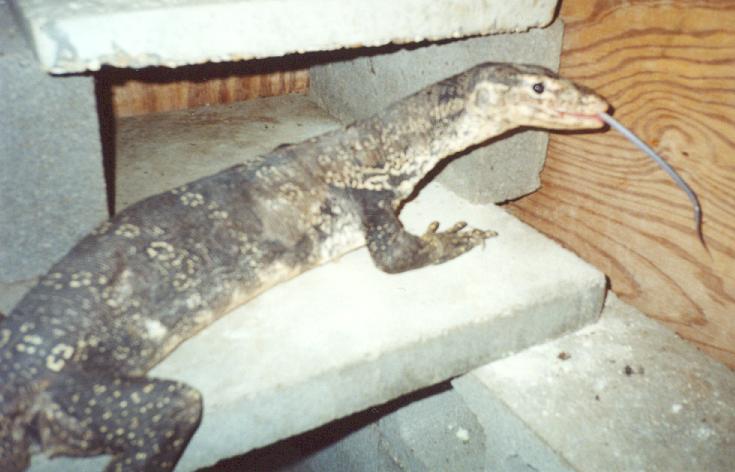General information:

Water monitors are widespread over a large geographical area.
In some areas such as India and the Philippine Islands they are becoming
scarce through unsustainable use. Other areas, however, such as the Andamen
and Nicobar islands, Sri Lanka, Southern China, Malaysia, and Borneo have
large populations of water monitors. Water monitors, as their name suggests,
are rarely found far from water and they have no trouble swimming long
distances. This ability has allowed them to colonize many remote islands.
Once on these islands they have no trouble adapting as they, being carnivorous,
will eat almost anything. Their diet depends mainly on their size. Smaller
monitors will eat fish, crabs, mollusks, insects, eggs, frogs, snakes,
birds, and even other lizards. Larger monitors will eat these same things
along with monkeys, small deer, carrion, and even human corpses. In some
areas they fill the ecological niche commonly held by predatory carnivores.
With abundant food sources, water monitors will breed year round with the
female typically laying 15 eggs. They can make their nests in burrows,
tree hollows, and even inside termite mounds.
Photo by Rick Reed (FWZ Herpetarium)